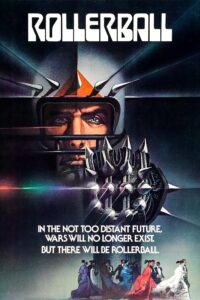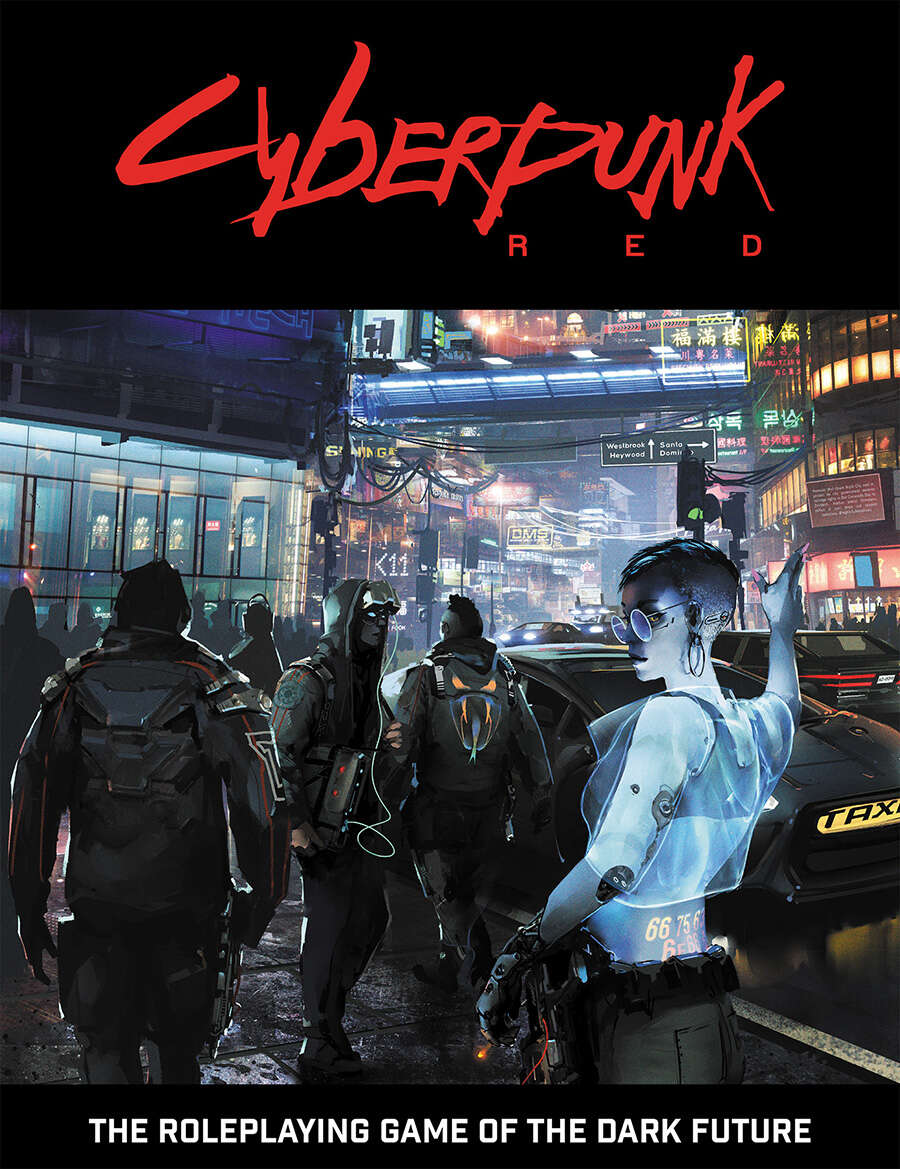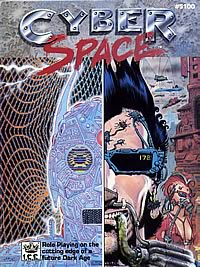CYBERPUNK RED IS A 2020 roleplaying game by Mike Pondsmith, James Hutt, Cody Pondsmith, Jay Parker, J Gray, David Ackerman, and Jaye Kovach, and published by R Talsorian Games. It is set in the year 2045, 33 years after Pondsmith’s original Cyberpunk game released in 1988 (set in 2013), but 32 years before the videogame version Cyberpunk 2077 from CD Projekt Red, released in 2020, set in 2077.
“Gamers want the new thing, but they want the
new thing to be like the old thing” – James
- If the player is only playing a preview, click here to hear the full episode on Spotify
- See the Wikipedia entry for the Cyberpunk RPG
- See Cyberpunk Red on DriveThruRPG
This episode is brought to you with the help of our Kickstarter backers, and in particular Moritz Botts and his podcast The World of RPGs, which we commend to you. Huge thanks to him and everyone else whose donations make Ludonarrative Dissidents possible.
Digital copies of Cyberpunk Red were provided by R Talsorian Games for the purposes of this episode. Our thanks go to them.
SHOW NOTES
These are the shownotes for the episode, a chance for us to pick up the threads, fill in the blanks and correct the occasional errors that we didn’t have time to pursue in the episode itself.
Cyberpunk as a genre has its origins in 1960s and 1970s novels by J. G. Ballard, Philip K. Dick, Vernor Vinge and others, but is notable that much of its 1980s tone came from two visual media: the manga Akira (1982) and the movie Blade Runner (also 1982). The first major novel of the cyberpunk genre was William Gibson’s Neuromancer (1984): by the time its sequels Count Zero (1986) and Mona Lisa Overdrive (1988) arrived the movement was in full cry, with Bruce Sterling, Rudy Rucker, Pat Cadigan, Walter John Williams and Greg Bear as its central pillars. Neal Stephenson’s Snow Crash came just eight years later, in 1992, when the genre already felt bloated and ripe for parody – it’s surprising how many people forget that’s what Snow Crash was.
Just as William Gibson had written Neuromancer without any real understanding of computers, Pondsmith designed Cyberpunk without having read Neuromancer. This quote is from a piece by Peter Ray Allison in the late Dicebreaker: “Instead, the designer cites his own key reference points for the game as the film Blade Runner and the novel Hardwired by Walter John Williams, who also helped playtest the RPG.” Pondsmith was also an anime and manga guy before it was cool or easy – his previous RPGs included the Japanimation-based Mekton and Teenagers From Outer Space.
The Cyberpunk game has run through five main editions:
- Cyberpunk (1988), later known as Cyberpunk 2013, no longer available
- Cyberpunk 2020 (1990), using the d10+stat+skill Interlock system.
- Cybergeneration (1993), introduces teens with nanotech-infused superpowers
- Cyberpunk V3.0 (2005), is set in the 2030s, deals with transhumanism in the wake of the fourth Corporate War, and uses Fuzion (a crossbreed of Interlock and the HERO system used by Hero Games, first released in 1998 and used by a number of other games) instead of Interlock. Most of the artwork is photographs of action figures. Go figure. This edition is no longer regarded as canon.
- Cyberpunk Red (2020), what we’re talking about
Cyberpunk 2077 is a videogame developed by CD Projekt Red and released in 2020, set in Night City from the Cyberpunk RPG background and developed with the involvement of Mike Pondsmith. It cost an estimated $430m to develop and has sold over 30m copies. It is apparently good. You play as V, a mercenary who has a digital copy of legendary musician Jonny Silverhand downloaded into their brain. Shenanigans ensue.
Mike Pondsmith began his career as a graphic designer. His first RPG was Mekton (1984), and its success led to the founding of R Talsorian Games in 1985. Cyberpunk came out in 1988 and created a goldrush for gritty near-future RPG settings across the hobby. Some of his other notable designs include Buck Rogers XXVC for TSR (1990), Dream Park (1992) and Castle Falkenstein (1994). He was president of GAMA, the Game Manufacturers’ Association, in 1993. In 1998 he put RTS on the back burner and moved to Microsoft’s Xbox division. (Sidenote: Ray Winninger, future head of D&D, was also at Microsoft in the early 2000s.) He returned to RPG design a few years later. Pondsmith is a bona fide prince among men and excellent company.
‘Titterpig’ derives from an attempt to pronounce ‘TTRPG’. Other jokey ways of speaking the acronym for our activity include ruh-puh-guh and Frup (from ‘FRP’)
James: “I sold my soul in 1989.” This is literally true. I will not explain.
We mentioned the four questions we ask of every RPG, but didn’t describe what the questions are. They are:
- What does it do?
- How does it do that?
- How do people play it?
- Why do they pay it that way?
- (And how well does it succeed?)
A ‘rockerboy’ like Johnny Silverhand is one of the canonical player-character classes in Cyberpunk, a professional performing musician. This is an unorthodox choice for a PC role and doesn’t really fit with much of cyberpunk as a written genre, but seems to work within the context of this ruh-puh-guh. Ross ran a Cyberpunk campaign (mentioned in the episode) based around Lady Gaga and her entourage, and you can listen to it here.
Nomads are another Cyberpunk character class, people who have dropped out or been dropped from the capitalist world and who now roam the world, or what’s left of it.
‘Lifepaths’ are a way of generating characters for RPGs by following their life before the moment the game starts, accumulating abilities and building a backstory as they go. Traveller is the best known example (you can hear us discuss it in season 2 episode 16), but other examples include Burning Wheel, Adventures in Tekumel, and games based on Modiphius’s 2D20 system.
Before ‘Overwatch’ was a globally successful franchise of first-person squad shooters from Blizzard Entertainment, it was a game mechanic that allows one or more units to react to the movement or approach of a hostile force, usually with gunfire, outside of their normal turn. This mechanic first appeared in Space Hulk (1989), devised by Warhammer co-creator Richard Halliwell. The name comes from military jargon of the 1950s, where a small force, often a single unit, provides protection to other friendly units while they execute an action or manoeuvre.
We’ve spoken of Phoenix Command before, the legendarily complicated (or ‘realistic’ if you prefer) set of RPG/skirmish rules by Barry Nakazono and David McKenzie, published by Leading Edge Games in 1986, which formed the basis of the 1991 Aliens Adventure Game RPG and is no longer legally available. (This ties into Wallis’s fourth rule of RPGs: “No RPG ever disappears from the market unless (a) it is a licence that has expired; (b) its creator fell out of love with it; or (c) its publisher ceased business in a complicated way”. By the way, Greg, any news about that time-travelling dinosaurs game from the 90s?)
It’s not clear what the Cyberpunk Red page-header font where the italics go the wrong way is: it looks like a glitched form of the post-Futura angular heavy sans faces that were popular fifteen years ago. Here it is:
The book is generally a bit of a typographical hotch-potch: one of the principal header fonts is very similar to the one on UK vehicle number plates, but slightly uglier, and they use it in a condensed form which honestly doesn’t look good.
We’ve talked before about the machine-readable typefaces OCR-A and OCR-B, but I wanted to bring in the Rollerball font, which turns out was created specifically for the film Rollerball (the original 1975 James Caan one). Just look at it.  Gorgeous. If the font looks familiar from somewhere else, it’s also used for the logo of the German rock band Skorpions. The secondary font, used in the movie but not on the posters, was released by Letraset under the name Countdown and is almost never seen today, perhaps because there isn’t much need for things that look like how the 70s thought lettering would be in the future.
Gorgeous. If the font looks familiar from somewhere else, it’s also used for the logo of the German rock band Skorpions. The secondary font, used in the movie but not on the posters, was released by Letraset under the name Countdown and is almost never seen today, perhaps because there isn’t much need for things that look like how the 70s thought lettering would be in the future.
The series of books about fonts we mentioned is The ABC of Fonts – only three books in the series, covering Albertus, Baskerville and Comic Sans. I suspect they didn’t sell as well as expected, but nevertheless Simon Garfield is an engaging and knowledgeable author.
ICE’s Cyberspace RPG (1989) was designed by Ted Foley, with cover art by Swamp Thing artist Rick Veitch. It is faithful to the paradigms of 1980s cyberpunk, which is to say that it’s very similar to the Cyberpunk RPG except it uses the Rolemaster/Space Master mechanics, to which it was also faithful, and lacked the graphical verve and stylistic elan of Talsorian’s game.
Shadowrun (1991) was FASA’s feted cyberpunk+fantasy game, heavy on the archetypes. It was kind of obvious, but that didn’t stop people liking it a lot.
Twilight 2000 preceded much of this malarky, having come out in 1984. It is a near-future game but not a cyberpunk one: PCs are military stranded in Europe during or after World War 3, which is going about as well as you’d expect. It was designed by Frank Chadwick, Dave Nilsen, Loren K. Wiseman and Lester W. Smith, strong designers all, but never really caught on – perhaps because while the military stuff was detailed and believable (this being a GDW product), the rest of it was not so much. The UK supplement, Survivors’ Guide to the United Kingdom (1990) was the last book for the first edition. Awful, awful cover.
A ‘roguelike’ is a style of videogame where the map, usually a multi-level dungeon, is generated and populated randomly, and must be explored and survived. The classic examples are Rogue (1980) from which the genre gets its name, Hack (1982) and Moria (1983). Most of the early ones, being from an earlier age, use ASCII characters instead of graphics (you play an ‘@’), and permadeath is a core part of the gameplay. They may appear simple, but tactically and atmospherically they were way ahead of their time.
‘The Time Of The Red’, in the Cyberpunk Red background, is the period between the end of the Fourth Corporate War and the game’s start-point. It takes its name from the red-tinged skies, a result of debris and atmospheric pollution from the war.
Greg says the Cyberpunk Red rulebook could stun a burglar, which made me think about gauging the thickness of books and documents from what they’re able to do. In her 1982 song ‘Let X=X’ Laurie Anderson said she would write a book, “and this book would be thick enough to stun an ox,” though I don’t believe she did. In WWI some soldiers carried a small bible in their breast pocket, believing it would be thick enough to stop a bullet: history does not record whether they were right, but in Kiss Kiss Bang Bang (2005) Harry Lockhart (Robert Downey Jr) learns that a pulp detective novel is too thin for the job. James has a rule of thumb that if you’re sent a contract that’s thick enough that you can kill a wasp with it, you need to have a lawyer read it before you sign.
Greg’s comments on the use of ‘Meta’ as a name within the C-Red background prompts the question: is Mark Zuckerberg a roleplayer? A friend of James’s who was a VP at Microsoft once reported that he observed a set of AD&D rulebooks on the shelves in Bill Gates’ office. But Zuck? Meta Platforms Inc., the parent business of Facebook, Instagram, Whatsapp and other tools of mass oppression, came into existence in 2021, the year after Cyberpunk Red, so that might not be a coincidence. But on the other hand he’s never mentioned it, and no real roleplayer would have screwed up a worldbuilding exercise like Metaverse as badly as Zuckerberg has.
Outgunned is a TTRPG of modern-day very-gun combats in the style of John Wick, designed and originally released by Italian publisher Two Bad Mice. We talked about it in our monthly livestream in January 2025.
The Zine of Retro-Futures is, we think, this one.
 ‘They stole our revolution – now we’re stealing it back’ was the slogan of weekly tech-newsletter NTK, which still sort-of exists in archive form at https://www.spesh.com/ntk/. The shirts have entirely disappeared but the NTK crew are still doing cool digital things: Danny O’Brien, half of NTK, was a senior member of staff at the Electronic Frontier Foundation for several years.
‘They stole our revolution – now we’re stealing it back’ was the slogan of weekly tech-newsletter NTK, which still sort-of exists in archive form at https://www.spesh.com/ntk/. The shirts have entirely disappeared but the NTK crew are still doing cool digital things: Danny O’Brien, half of NTK, was a senior member of staff at the Electronic Frontier Foundation for several years.
Here are some small-press RPGs about resistance to totalitarian overlords that might be useful:
- Bundle of Holding did a Resistance Bundle offer in January including several notable titles, and while the offer has expired, the page with links is still up.
- Survive the Tyrant, an anonymously authored game about forming resistance cells
- Grey Ranks
- Comrades
- Sigmata: This Signal Kills Fascists. You’re superheroes in this one so it’s eh for teachable moments but still deserves a place on the list
- Spire: The City Must Fall. High elves are bad!
- Brinkwood: Blood of Tyrants in which you’re fighting tyrannical vampires, so… Peter Thiel?
- Misspent Youth
- Perfect Unrevised
- Bleake Rebellion
- To Lay A Foundation
- Rosenstrasse
- Winterhorn
- Oceania 2084
- Predatory States
- Resistance is Required
- Try To Praise Your Mutilated Heart
It would be remiss of us not to also link to the closest thing to an RPG the US Government has ever published: The OSS Simple Sabotage Field Manual from 1944.
Greg asked whether Turkey has universal healthcare? It does, it’s called Universal Health Insurance and it accounts for 6.3% of the country’s GDP which is low by the standards of these things. Turkish life expectancy at birth is 78.3 years, compared to 77 years in the USA, though of course the Covid pandemic has distorted both those figures.
Oscar Pistorius is the South African sprinter, a double below-the-knee amputee of extraordinary skill who popularised the use of blades for running. In 2013 he shot and killed his girlfriend, which makes him an interesting figure to bring up in a conversation about cyberpsychosis, the in-game concept that replacing parts of your body makes you mentally less human. Just to make it clear, we at LND do not believe that Pistorius’s crime had anything to do with his disability.
Sentient vending machines exist in fiction, notably in the Hitchhiker’s Guide to the Galaxy, where they are capable of producing a drink that is almost completely entirely unlike tea. Although the first vending machines were developed in the UK in the 1880s to sell postcards and stationery at railway stations, Japan is the spiritual home of all such devices, with one for every 23 persons. The much-mocked machines selling used panties appeared in one small area of Chiba City in 1993, before being declared illegal and outlawed within months. They have not existed for over three decades.
John Nephew is the founder of Atlas Games. Before that he was the publisher at Lion Rampant, responsible for the first two editions of Ars Magica. I’ve never known anyone in the industry have anything bad to say about him.
Hardwired Island is a retrofuture cyberpunk game.
Eclipse Phase is a titterpig of a transhuman future that we discussed in series 2 episode 7.
Edgerunners Mission Kit is a supplement for Cyberpunk Red, based on the animated Edgerunners TV series from 2022, set in the world of Cyberpunk 2077, and produced by Studio Trigger for Netflix.
James promises he will finish writing Cyberplunk!, his hybrid of desperate technoir sociopathy and pulling sticks out of a plastic tower full of marbles as soon as he gets a moment.
And if you’re wondering what back in the 1980s we thought a cyberpunk future would look like, I can assure you it wasn’t much like the Shadowrun video ‘A Night’s Work’, which we are delighted to be able to mock again.
Thank you for listening! The hosts of this episode were Ross Payton, Greg Stolze and James Wallis, with audio editing by Ross and show notes by James. We hope you enjoyed it. If anything in this episode has spurred your interest then we invite you to come and discuss it on our Discord.
If you click on any of the above links to DriveThruRPG and buy something, Ludonarrative Dissidents will receive a small affiliate fee. You will not be charged more, and the game’s publisher will not receive less, it’s a win-win-win. Thank you for supporting the podcast this way.


